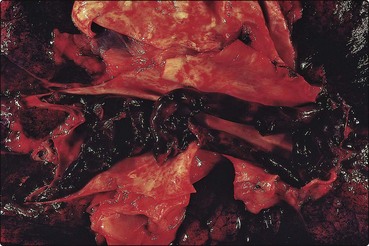40 Standard unfractionated heparin may be used therapeutically to treat established thrombosis (usually intravenously at higher dosage) or prophylactically to prevent thrombosis (usually subcutaneously at lower dosage). Most common indications for therapeutic use are deep vein thrombosis (DVT) and pulmonary embolism (PE) (Fig 40.1). A typical regimen is an intravenous loading dose of 5000 units followed by an infusion of 1000–2000 units/hour. The anticoagulant response varies as the drug binds non-specifically to plasma and cellular proteins. Laboratory monitoring using the APTT (see p. 20) is required; the therapeutic range is usually 1.5–2.5, these values being the ratio of the patient’s APTT to a control sample. As the half-life is short, high APTTs are managed by stopping the heparin but in the event of bleeding (in up to 7% of cases) the antidote protamine can be given. When the APTT is too low the heparin dose should be promptly increased. Heparin is normally continued until oral anticoagulation is therapeutic.
Anticoagulation and thrombolytic therapy
Anticoagulation
Unfractionated heparin
Anticoagulation and thrombolytic therapy




